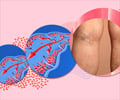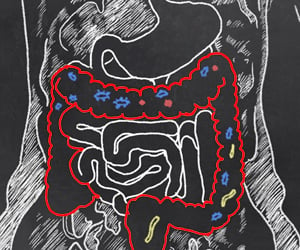Larval (maggot) therapy has similar health benefits and costs compared with a standard treatment for leg ulcers, find two studies published on bmj.
Larval (maggot) therapy has similar health benefits and costs compared with a standard treatment for leg ulcers, find two studies published on bmj.com today.
Leg ulcers are chronic wounds most commonly caused by diseased veins in the legs. Debridement (the removal of dead tissue from the ulcer surface) is a common part of ulcer management and is widely viewed as having a role in promoting wound healing.Debridement can be undertaken with a hydrogel, but it has been suggested that larval therapy debrides wounds more swiftly, as well as stimulating healing and reducing infection.
A team of UK researchers have carried out the first randomised controlled trial to investigate the clinical and cost-effectiveness of larval therapy on wound healing.
The trial involved 267 participants who had at least one venous or mixed venous/arterial leg ulcer with dead tissue (sloughy and/or necrotic tissue) covering at least a quarter of the wound.
Participants were randomised to receive loose larvae, bagged larvae or hydrogel during the debridement phase, followed by standard treatment. People were monitored for up to 12 months, during which time the date of complete healing of the ulcer was recorded by trained nurses.
Date of debridement was also recorded, as were bacterial levels, adverse events and ulcer-related pain. Participants completed a health-related quality of life questionnaire at the start of the study, and then again at three, six, nine and 12 months.
Advertisement
There was no difference between larvae and hydrogel groups in health-related quality of life or in bacterial load (including MRSA). Larval therapy was associated with twice as much pain in the 24 hours prior to removal of the first application compared with hydrogel.
Advertisement
In a separate analysis, the researchers calculate that larval therapy is likely to have similar cost-effectiveness to hydrogel. As such, they conclude that healthcare decision makers should generally be indifferent when recommending these two therapies for the debridement of sloughy leg ulcers.
Source-Eurekalert
SRM









